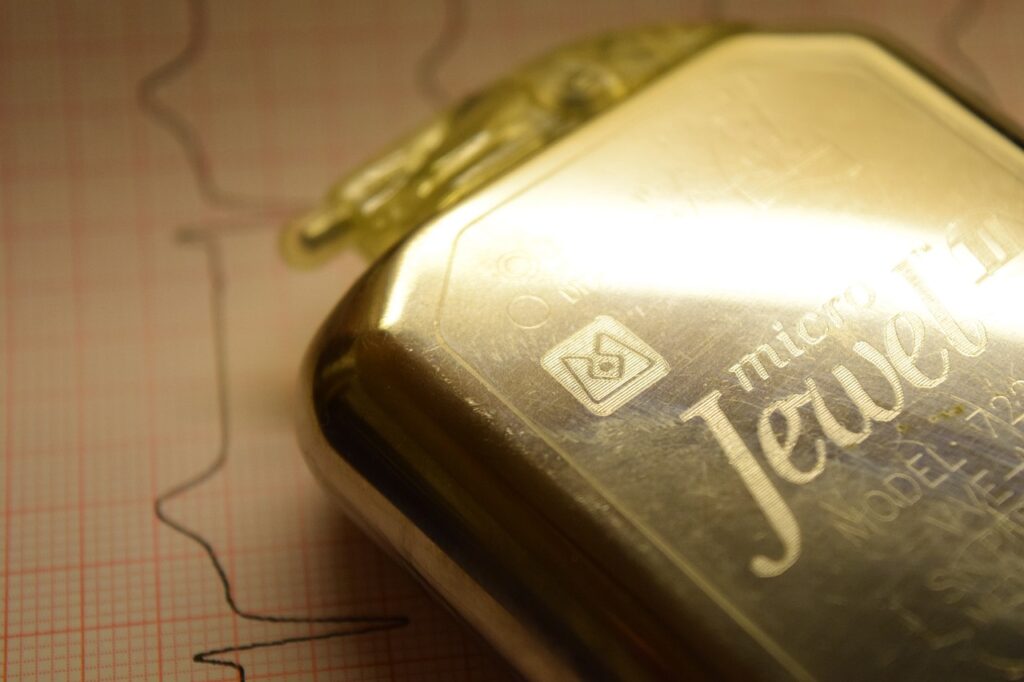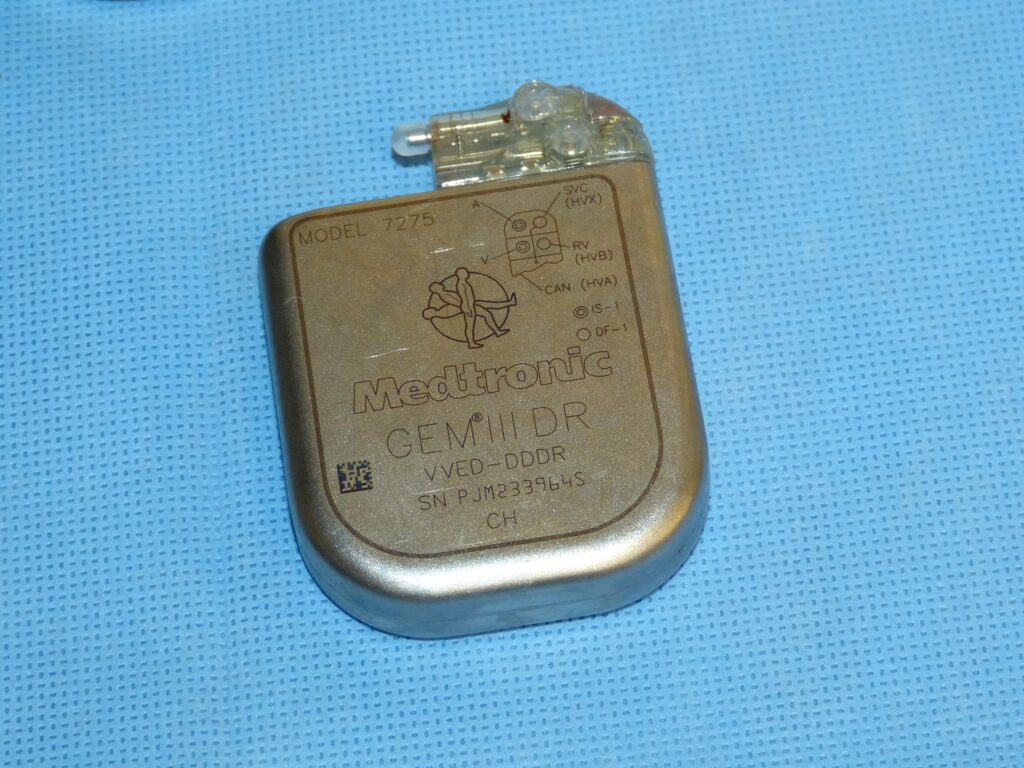Pacemakers are medical devices that help regulate a person’s heartbeat. They are typically implanted under the skin in the chest area and connected to the heart through wires. Pacemakers are used to treat a variety of heart conditions, including bradycardia, heart block, and atrial fibrillation. While pacemakers can be life-saving, they can also be expensive.
The cost of a pacemaker can vary widely depending on a number of factors. These factors include the type of pacemaker, the hospital where it is implanted, the geographical location, and the patient’s insurance coverage. In addition to the cost of the pacemaker itself, there may be additional costs associated with the implantation procedure, hospitalization, medications, and diagnostic tests. Understanding these factors can help patients and their families make informed decisions about their healthcare and finances.
Key Takeaways
- Pacemaker costs can vary widely depending on a number of factors, including the type of pacemaker, the hospital where it is implanted, the geographical location, and the patient’s insurance coverage.
- In addition to the cost of the pacemaker itself, there may be additional costs associated with the implantation procedure, hospitalization, medications, and diagnostic tests.
- Understanding these factors can help patients and their families make informed decisions about their healthcare and finances.
Understanding Pacemakers
A pacemaker is a small device that helps regulate the heartbeat and maintain a normal heart rhythm. It works by sending electrical signals to the heart muscle through leads, which are placed in the heart’s electrical system. The pulse generator, which is the main component of the pacemaker, is implanted under the skin of the chest or abdomen.
Pacemakers are used to treat various heart conditions, such as bradycardia (a slow heartbeat), heart block (a condition where the electrical signals are blocked or delayed), and other arrhythmias (abnormal heart rhythms). The device monitors the heart’s activity and sends electrical signals to the heart muscle when needed to maintain a normal heartbeat.
There are different types of pacemakers available, including single-chamber, dual-chamber, and biventricular pacemakers. Single-chamber pacemakers have one lead, which is placed in either the right atrium or the right ventricle of the heart. Dual-chamber pacemakers have two leads, which are placed in the right atrium and the right ventricle. Biventricular pacemakers have three leads, which are placed in the right atrium, the right ventricle, and the left ventricle.
Pacemakers also have sensors that detect the body’s movements and adjust the heart rate accordingly. For example, if the person is exercising or moving around, the pacemaker will increase the heart rate to meet the body’s increased demand for oxygen.
The cost of a pacemaker can vary depending on the type and features of the device. On average, the cost of a pacemaker can range from $3,000 to $6,000, not including the cost of the surgery and hospital stay. Some insurance plans cover the cost of pacemakers, but it’s best to check with the insurance provider to see what is covered.
Overall, pacemakers are a safe and effective treatment option for people with heart conditions. They help regulate the heartbeat and maintain a normal heart rhythm, allowing people to live a more active and healthy life.
Types of Pacemakers
Pacemakers are electronic devices that are implanted under the skin to regulate the heartbeat of individuals with heart rhythm disorders. There are three main types of pacemakers: single-chamber, dual-chamber, and biventricular pacemakers.
Single-chamber pacemakers
Single-chamber pacemakers have one lead that is implanted in the right atrium or right ventricle of the heart. These pacemakers are typically used for individuals who have problems with the heart’s upper chambers (atria) or lower chambers (ventricles) but not both.
Dual-chamber pacemakers
Dual-chamber pacemakers have two leads, one implanted in the right atrium and the other in the right ventricle of the heart. These pacemakers are used for individuals who have problems with the electrical signals that control both the atria and ventricles.
Biventricular pacemakers
Biventricular pacemakers have three leads, one implanted in the right atrium, one in the right ventricle, and one in the left ventricle. These pacemakers are used for individuals with heart failure who have problems with the electrical signals that control both ventricles.
Overall, the type of pacemaker chosen for an individual depends on the specific heart rhythm disorder they have and the extent of the problem. It is important to consult with a healthcare professional to determine the best type of pacemaker for each individual case.
Pacemaker Implantation Procedure
The pacemaker implantation procedure is a minor surgery that involves the placement of a small device in the chest to regulate the heart’s rhythm. This procedure is usually performed under local anesthesia, which means that the patient is awake but does not feel any pain.
During the procedure, a small incision is made in the chest, and a catheter is inserted through the vein into the heart. The pacemaker device is then attached to the catheter and implanted under the skin in the chest area. The entire procedure takes about 1-2 hours to complete.
After the procedure, the patient is monitored for a short period of time to ensure that the pacemaker is functioning properly. The patient can usually go home the same day or the next day, depending on the doctor’s recommendation.
The cost of pacemaker implantation procedure can vary depending on several factors, including the type of pacemaker used, the hospital or clinic where the procedure is performed, and the patient’s insurance coverage. However, the average cost of a pacemaker implantation procedure in the United States is around $30,000-$50,000.
It is important to note that pacemaker implantation is a safe and effective procedure that can significantly improve the quality of life for people with heart conditions. Patients who undergo this procedure can expect to experience fewer symptoms and a reduced risk of complications associated with an irregular heartbeat.
Health Factors Affecting Pacemaker Cost
The cost of a pacemaker is determined by several health factors. The type of pacemaker required, the condition of the patient’s heart, and the severity of the heart condition are all factors that can affect the cost of a pacemaker.
Type of Pacemaker
The type of pacemaker required by the patient is a significant factor in determining the cost. There are several types of pacemakers available, and the cost varies depending on the features and capabilities of the pacemaker. A basic pacemaker that only regulates heart rate is less expensive than a pacemaker that includes additional features such as an implantable defibrillator.
Condition of the Heart
The condition of the patient’s heart is another significant factor in determining the cost of a pacemaker. Patients with heart conditions such as arrhythmia, irregular heartbeat, heart failure, atrial fibrillation, heart attack, stroke, and pericarditis may require a more advanced pacemaker, which can increase the cost.
Severity of the Heart Condition
The severity of the patient’s heart condition also affects the cost of a pacemaker. Patients with severe heart conditions may require more frequent monitoring and adjustments to their pacemaker, which can increase the cost of care.
In conclusion, the cost of a pacemaker is determined by several factors related to the patient’s health. The type of pacemaker required, the condition of the patient’s heart, and the severity of the heart condition are all factors that can affect the cost of a pacemaker.
Insurance and Pacemaker Cost
When it comes to pacemaker cost, insurance coverage is a key factor that patients need to consider. In general, pacemaker implantation is considered a medically necessary procedure and is covered by most health insurance plans, including Medicare and private insurance. However, the amount of coverage and out-of-pocket expenses varies depending on the insurance plan and the patient’s individual circumstances.
For patients with Medicare, the cost of a pacemaker is typically covered under Part A (hospital insurance) and Part B (medical insurance). However, patients are still responsible for deductibles and copays. Generally, Medicare covers 80% of the cost of the pacemaker, while the patient is responsible for the remaining 20%. Depending on the specific Medicare plan, patients may also be responsible for a deductible before coverage kicks in.
For patients with private health insurance, coverage for pacemakers varies depending on the specific plan. Some plans may cover 100% of the cost of the pacemaker, while others may require patients to pay a deductible or copay. Patients should check with their insurance provider to determine their specific coverage and out-of-pocket costs.
One specific insurance provider, Blue Cross Blue Shield of Tennessee, offers coverage for pacemakers under certain plans. Patients with these plans may be eligible for coverage of the full cost of the pacemaker, including any necessary surgeries or hospital stays. However, patients should check with their specific plan to determine their coverage.
In summary, insurance coverage is an important factor to consider when it comes to pacemaker cost. Patients should check with their insurance provider to determine their specific coverage and out-of-pocket costs, including deductibles and copays. While most insurance plans cover pacemaker implantation, the amount of coverage and out-of-pocket expenses can vary widely depending on the plan and the patient’s individual circumstances.
Hospitalization and Pacemaker Cost
When a patient requires a pacemaker, hospitalization is often necessary. The cost of the pacemaker procedure can vary depending on the length of the hospital stay and the type of pacemaker used.
In general, the cost of a pacemaker procedure can range from $20,000 to $50,000. This includes the cost of the pacemaker device, the surgical procedure, and the hospital stay.
If the patient requires an extended hospital stay, the cost of the pacemaker procedure can increase significantly. For example, if the patient requires an inpatient stay at Washington Hospital Healthcare System, the cost can range from $50,000 to $100,000.
Outpatient pacemaker procedures are also available, but they are typically less expensive than inpatient procedures. The cost of an outpatient pacemaker procedure can range from $5,000 to $10,000.
It is important for patients to discuss the cost of the pacemaker procedure with their healthcare provider and insurance company before undergoing the procedure. Many insurance plans cover the cost of pacemaker procedures, but it is important to understand the coverage and any out-of-pocket costs that may be associated with the procedure.
In summary, the cost of a pacemaker procedure depends on several factors, including the length of the hospital stay, the type of pacemaker used, and the healthcare provider. Patients should discuss the cost of the procedure with their healthcare provider and insurance company to understand the coverage and any out-of-pocket costs associated with the procedure.
Geographical Location and Pacemaker Cost
The cost of a pacemaker can vary significantly depending on the geographical location of the patient. In general, the cost of a pacemaker tends to be higher in urban areas compared to rural areas. This is because the cost of living is higher in cities, and medical facilities in urban areas tend to have higher overhead costs.
For example, in Columbus, OH, the average cost of a pacemaker implantation procedure is around $30,000. This is higher than the national average of $25,000. However, patients in Columbus, OH may be able to find lower-cost options by shopping around and comparing prices from different healthcare providers.
In Wisconsin, the price point for a pacemaker implantation procedure is generally lower than the national average. This is because the cost of living is lower in Wisconsin compared to other states, and healthcare providers in the state have lower overhead costs. Patients in Wisconsin can expect to pay around $20,000 for a pacemaker implantation procedure.
In the western United States, the cost of a pacemaker implantation procedure can vary widely depending on the specific location. For example, patients in California may pay more for a pacemaker implantation procedure compared to patients in Arizona or New Mexico. This is because the cost of living is generally higher in California, and healthcare providers in the state may have higher overhead costs.
Overall, patients should be aware that the cost of a pacemaker can vary significantly depending on their location. Patients should shop around and compare prices from different healthcare providers to find the best option for their needs and budget.
Potential Complications and Additional Costs
While pacemakers are generally safe and effective, there are potential complications that can arise. These complications can result in additional costs for the patient.
One of the most common complications is infection. The risk of infection is highest in the days and weeks following the implantation of the pacemaker. Signs of infection include redness, swelling, and discharge at the incision site. Treatment typically involves antibiotics and, in some cases, removal of the pacemaker.
Another potential complication is the formation of blood clots. Blood clots can form around the pacemaker leads, which can lead to serious health problems. Symptoms of blood clots include pain, swelling, and redness in the affected area. Treatment may involve blood-thinning medication or removal of the pacemaker.
Complications can also arise from the pacemaker leads themselves. The leads can become dislodged or damaged, which can cause the pacemaker to malfunction. In some cases, the leads may need to be repositioned or replaced, which can be costly.
Swelling and bleeding are also possible complications. Swelling can occur at the incision site or in the surrounding tissue. Bleeding can occur during the implantation procedure or as a result of injury to the pacemaker leads. In some cases, additional surgery may be required to address these complications.
In summary, while pacemakers are generally safe and effective, there are potential complications that can arise. These complications can result in additional costs for the patient, including the cost of additional procedures and medications. It is important for patients to be aware of these risks and to discuss them with their healthcare provider.
Medications and Pacemaker Cost
When it comes to pacemaker implantation, the cost is not just limited to the device itself. There are other factors that can affect the overall cost, including medications.
One important medication that may be necessary before and after pacemaker implantation is blood thinners. This medication is often prescribed to prevent blood clots from forming around the pacemaker leads or in the heart. The cost of blood thinners will depend on the type of medication prescribed and the duration of treatment.
Another medication that may be required is warfarin or coumadin. These medications are often prescribed to patients who have a history of blood clots or atrial fibrillation. Warfarin or coumadin can interact with the pacemaker, so careful monitoring is necessary to ensure that the device is functioning properly. The cost of warfarin or coumadin will depend on the dosage and duration of treatment.
Anesthesia is another factor that can affect the cost of pacemaker implantation. Patients may require general anesthesia or conscious sedation during the procedure. The cost of anesthesia will depend on the type of anesthesia used and the duration of the procedure.
Overall, the cost of medications and anesthesia can add to the overall cost of pacemaker implantation. Patients should discuss these costs with their healthcare provider and insurance company to determine the best course of action.
Brand and Model Impact on Pacemaker Cost
The brand and model of a pacemaker can have a significant impact on its cost. Generally, more advanced pacemakers tend to be more expensive than basic models. Additionally, some brands may be more expensive than others due to factors such as research and development costs, marketing expenses, and brand reputation.
For example, a basic single-chamber pacemaker may cost around $2,500 to $3,000, while a more advanced biventricular pacemaker may cost upwards of $6,000 to $8,000. The cost of a pacemaker can also vary depending on the features and capabilities of the device, such as the type of sensors used, the battery life, and the programming options.
The brand of a pacemaker can also impact its cost. For example, some of the most well-known pacemaker brands include Medtronic, Boston Scientific, and St. Jude Medical. These brands may be more expensive than lesser-known brands due to their reputation for quality and reliability.
It is important to note that while brand and model can impact the cost of a pacemaker, other factors such as the hospital or healthcare provider may also play a role in determining the final cost. Patients should always consult with their healthcare provider and insurance provider to determine the cost of a pacemaker and any associated expenses.
Financial Assistance for Pacemaker Costs
Pacemaker implantation is a costly procedure that can cause a significant financial burden for patients and their families. Fortunately, there are several financial assistance programs available to help patients cover the cost of pacemakers.
One option is to seek discounts from the manufacturer or the hospital. Some manufacturers offer discounts for patients who are uninsured, underinsured, or have a low income. Hospitals may also offer discounts or payment plans for patients who cannot afford the full cost of the procedure.
Another option is to apply for financial assistance programs. These programs are designed to help patients who are unable to pay for their medical expenses. Some examples of financial assistance programs include:
- Medicare: Medicare is a federal health insurance program that provides coverage for people who are 65 or older, as well as people with certain disabilities. Medicare may cover the cost of pacemaker implantation if it is deemed medically necessary.
- Medicaid: Medicaid is a joint federal and state program that provides health coverage for people with low income. Medicaid may cover the cost of pacemaker implantation for eligible patients.
- Patient Assistance Programs: Some pharmaceutical companies offer patient assistance programs that provide free or discounted medications to patients who cannot afford them. These programs may also cover the cost of pacemaker implantation for eligible patients.
- Charitable Organizations: There are several charitable organizations that provide financial assistance to patients who cannot afford medical expenses. These organizations may offer grants or other forms of financial assistance to cover the cost of pacemaker implantation.
It is important to note that eligibility requirements for financial assistance programs may vary depending on the program and the patient’s individual circumstances. Patients should contact the program directly or speak with their healthcare provider for more information on eligibility and application requirements.
Post-Implantation Care and Costs
After a pacemaker implantation, the patient will need to take some precautions and follow certain instructions to ensure proper functioning and longevity of the device. Here are some of the post-implantation care guidelines and associated costs:
Care
- The patient should avoid lifting heavy objects or raising the affected arm above shoulder level for several weeks after the surgery.
- The patient should avoid sleeping on the side of the implantation for a few weeks.
- The patient should avoid any activities that may interfere with the pacemaker or cause physical damage to the device.
- The patient should attend regular follow-up appointments with the cardiologist to monitor the pacemaker’s performance and battery life.
Activities
- Most patients can resume normal activities within a few days to a week after the surgery.
- Patients should avoid contact sports or activities that may cause direct impact to the chest area.
- Patients should inform their healthcare provider if they plan to undergo any medical or dental procedures that may interfere with the pacemaker’s functioning.
Normal Life
- Pacemakers are designed to help patients live normal, active lives.
- Patients should inform their family, friends, and colleagues about the pacemaker and its functions to avoid any misunderstandings or unnecessary concerns.
Cell Phone
- Pacemakers are not affected by cell phones, but patients should keep their phones at least 6 inches away from the pacemaker to avoid any interference.
The cost of post-implantation care and follow-up appointments may vary depending on the healthcare provider and insurance coverage. Patients should consult with their healthcare provider and insurance company to understand the associated costs.
Diagnostic Tests and Pacemaker Cost
Before receiving a pacemaker, patients may need to undergo several diagnostic tests to determine the root of their heart condition. These tests can add to the overall cost of receiving a pacemaker.
Some common diagnostic tests include:
- MRI: Magnetic resonance imaging (MRI) uses a magnetic field and radio waves to create detailed images of the body. However, patients with pacemakers cannot undergo an MRI due to the magnetic field interfering with the device’s function. Alternative imaging methods, such as CT scans, may be used instead.
- Chest X-ray: A chest X-ray can help doctors visualize the heart and lungs. It is a non-invasive and relatively inexpensive test.
- Electrocardiogram (ECG): An ECG records the electrical activity of the heart. It can help diagnose arrhythmias and other heart conditions. The cost of an ECG can vary depending on the healthcare provider.
- Holter monitor: A Holter monitor is a portable device that records the heart’s electrical activity over a 24- or 48-hour period. It can help diagnose intermittent arrhythmias. The cost of a Holter monitor can vary depending on the healthcare provider.
- Echocardiogram: An echocardiogram uses sound waves to create images of the heart. It can help diagnose structural abnormalities and other heart conditions. The cost of an echocardiogram can vary depending on the healthcare provider.
- Stress test: A stress test involves exercising on a treadmill or stationary bike while being monitored for changes in heart rate and blood pressure. It can help diagnose coronary artery disease. The cost of a stress test can vary depending on the healthcare provider.
- Cardioversion: Cardioversion is a procedure that uses electrical shock to restore a normal heart rhythm. It may be necessary before receiving a pacemaker. The cost of cardioversion can vary depending on the healthcare provider.
- Electrical device: Patients may need to undergo additional tests to determine the type of pacemaker or other electrical device that will best suit their needs. The cost of these tests can vary depending on the healthcare provider.
Overall, the cost of diagnostic tests can add to the overall cost of receiving a pacemaker. Patients should discuss the potential costs with their healthcare provider and insurance company before undergoing any tests.
Cost Transparency and Resources
When it comes to pacemaker cost, it can be difficult to determine what the final price will be. However, there are resources available that can help provide transparency and clarity on this matter.
One such resource is the Healthcare Bluebook, which provides cost estimates for various medical procedures, including pacemaker implantation. Another resource is the Heart Rhythm Society, which offers information on pacemaker cost and insurance coverage.
Patients can also consult websites such as Healthgrades.com to find information on facilities and doctors with expertise in pacemaker implantation. For example, Dartmouth-Hitchcock Medical Center is known for its high-quality care in this area.
It is important to note that pacemaker cost can vary depending on a number of factors, including the type of pacemaker, the voltage required, and whether the procedure is done on an outpatient or inpatient basis. Patients should also be aware of any additional costs, such as equipment and facility fees.
Overall, by utilizing these resources and doing research, patients can gain a better understanding of pacemaker cost and make informed decisions regarding their care.
Frequently Asked Questions
What is the average cost of pacemaker surgery in the USA?
The average cost of pacemaker surgery in the USA ranges from $20,000 to $50,000. However, the cost may vary depending on several factors, such as the type of pacemaker, the hospital, and the surgeon’s fees.
How much does pacemaker surgery cost with insurance?
Pacemaker surgery cost with insurance may vary depending on the type of insurance and the coverage provided. In general, most insurance plans cover pacemaker surgery, but patients may still be responsible for co-payments and deductibles. The cost may also depend on the hospital and surgeon’s fees.
What is the cost of a shoulder pacemaker?
The cost of a shoulder pacemaker may vary depending on several factors, such as the type of pacemaker and the hospital. However, the average cost of a shoulder pacemaker ranges from $25,000 to $40,000.
How much does a CRT pacemaker cost?
The cost of a CRT pacemaker may vary depending on several factors, such as the type of pacemaker and the hospital. However, the average cost of a CRT pacemaker ranges from $30,000 to $50,000.
What is the cost of a biventricular pacemaker?
The cost of a biventricular pacemaker may vary depending on several factors, such as the type of pacemaker and the hospital. However, the average cost of a biventricular pacemaker ranges from $30,000 to $50,000.
Are pacemakers covered by insurance?
Yes, most insurance plans cover pacemakers. However, patients may still be responsible for co-payments and deductibles. The cost may also depend on the hospital and surgeon’s fees.





